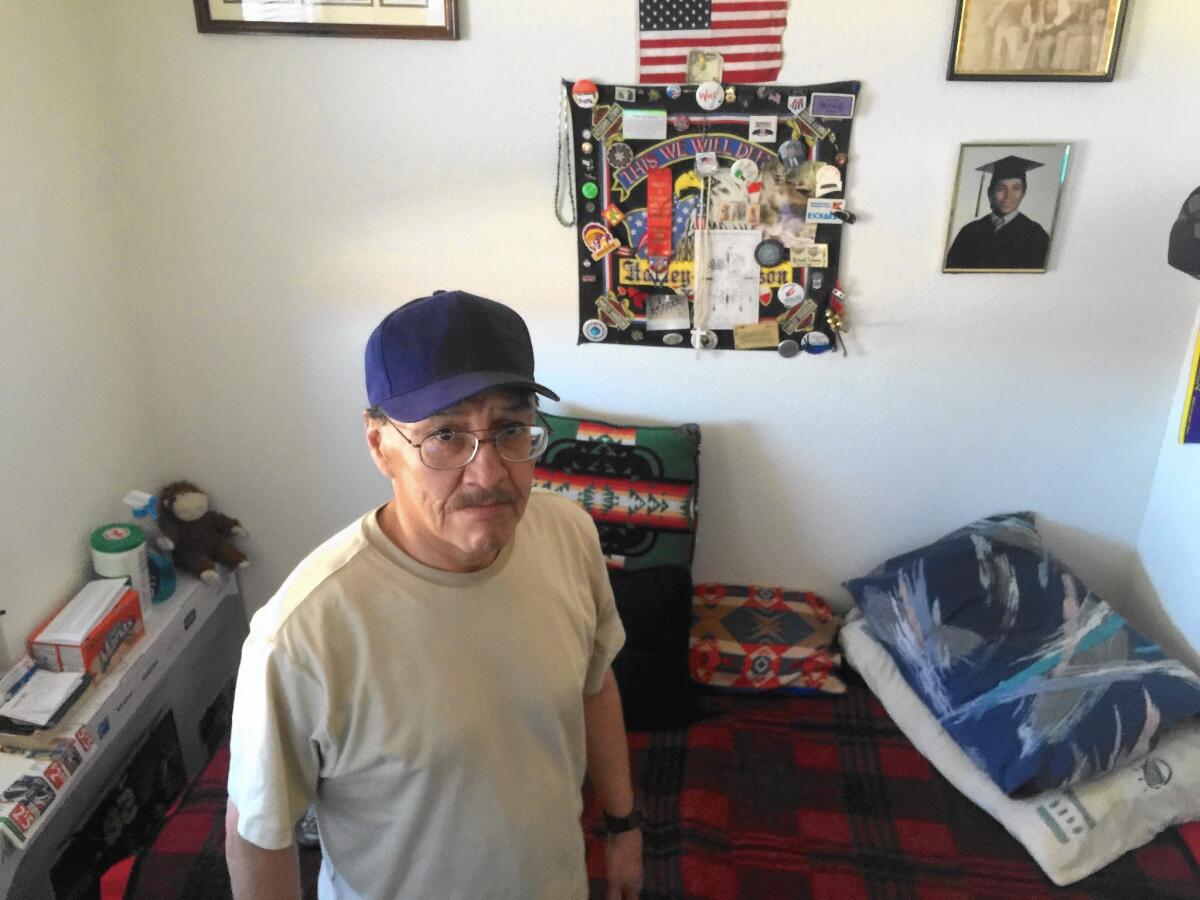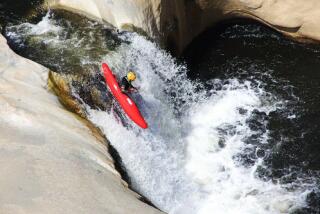Rash of exposure deaths in Gallup, N.M., blamed on an old foe: Alcoholism

Reporting from Gallup, N.M. — This morning, like every cold morning, the man wakes up with fear in his gut. Gallup waits for sunrise to collect its dead.
He is trim and neat, from his shaved pate to the tilt of his white straw hat, an affectation developed over a decade of living in this city after leaving the seminary in Berkeley. He is probably the only person for several miles wearing both a cowboy hat and turquoise studs in each ear.
From November snows to freezing April nights, Sanjay Choudhrie winces at every ambulance and siren. Here, in the place labeled both the Capital of Indian Country and Drunk Town, USA, early-morning sirens usually mean someone was found in a ditch or a canyon, frozen to death overnight, an empty liquor bottle not far away.
This winter, there were 17 exposure deaths. Choudhrie believes there will be more before the end of spring.
Gallup is a chilly spot on the high desert plateau near the New Mexico-Arizona border. Just 26 miles from Window Rock, Ariz., the capital of the Navajo Nation, Gallup has long served as the closest shopping and recreation area for the 165,000-person Navajo reservation and the surrounding tribal pueblos.
Choudhrie directs Community Area Resource Enterprise, nicknamed CARE 66 for the highway that splits Gallup. Funded by public and private grants, the organization has a dozen people on staff and leads projects aimed at ending chronic homelessness and alcoholism.
Though Gallup has long tried to shake its reputation as a center for public drunkenness, the issue seems intractable and any solutions have come up short. This is most evident at a major shopping center in northern Gallup, where several men leaned and swayed outside a Home Depot one recent day, occasionally accosting shoppers leaving the store.
Such sights discourage potential developers. “We have a problem when business owners come to town and stay two-three days,” said City Councilman Cecil Garcia in a public radio forum. “Their wives go to Walgreens and have people coming up to them, and they don’t want to move their business here.
“They say, ‘We can’t live here.’”
For years, the liquor industry ran Gallup, and many politicians were involved in alcohol sales. But the backlash to the alcohol problem began in the 1970s, and by 1987, a Gallup mayor was elected on an anti-alcohol platform.
The city has tried other fixes. A downtown business organization fought to ban liquor stores from downtown, along with their drive-up windows. The city no longer has a “drunk tank,” instead turning to a detox facility. Under a state law, the city deputizes community service aides who can put intoxicated people in protective custody.
Severe poverty, homelessness and rampant substance abuse on the reservations drain into this city, bringing people and problems that may otherwise be spread over several counties all into one place. Gallup has 39 liquor licenses and 22,000 people, amounting to one of the highest per-capita rates in the state.
More than anything, the chronic alcoholism — Gallup far outpaces the rest of New Mexico in deaths from cirrhosis of the liver — feeds the cycle of death here.
Choudhrie, himself an alcoholic in recovery, seeks small steps. Rather than force alcoholics to quit drinking, he says he wants “to turn abusers into users.” Drinkers, but responsible drinkers.
While watching drunk men being turned away from zero-tolerance shelters, he realized insisting on sobriety wouldn’t save people from hypothermia. Stable, permanent housing for the city’s homeless and substance-dependent population would get bodies off the streets, Choudhrie said. But all of it costs money, and CARE 66 lost half its staff last year when a grant ended.
Periodically, one publication or another will announce that Gallup’s crisis is over. In 2003, the Robert Wood Johnson Foundation proclaimed Gallup a success story.
“The story of Gallup is a good example of how timely funding from a foundation can help move an agenda of pressing concern to a community,” the foundation wrote in a celebratory note.
A year later, 23 people died of exposure. Of the 17 who died this cold season, one was Linda Carroll, 45, of the Navajo’s Water’s Edge Clan, who worked as a housekeeper at motels. Her body was found in a field on Dec. 30.
Armando James Lee, 48, a silversmith and member of the Red Running into the Water People Clan, was found Dec. 5 on the scrubby outskirts of town. Joseph Whitehip, 39, was found in a field on Jan. 2. Dogs had mauled his remains.
“What we came down to,” Choudhrie said, “is most of these deaths are preventable.”
And so he has hope. The crown jewel in his plan is a former Western-style frontier hotel that’s been redesigned and refurbished into temporary and permanent housing for chronic alcoholics.
“It’s great. It’s home,” said Rich Taliwood, 50, who has been at the shelter for months. His room is neat and alcohol-free, with a prominent Navajo blanket and photos of family, including one of a brother who died of alcohol-related causes last year.
Choudhrie’s goal is simple. Deaths will happen, he acknowledges, but they don’t have to be on this scale. Santa Fe, for instance, has one exposure death per year.
“That’s still a life, and it’s awful,” Choudhrie said. “But having just one death here, that would mean we’re getting closer to a solution.”
Twitter: @nigelduara
More to Read
Sign up for Essential California
The most important California stories and recommendations in your inbox every morning.
You may occasionally receive promotional content from the Los Angeles Times.











